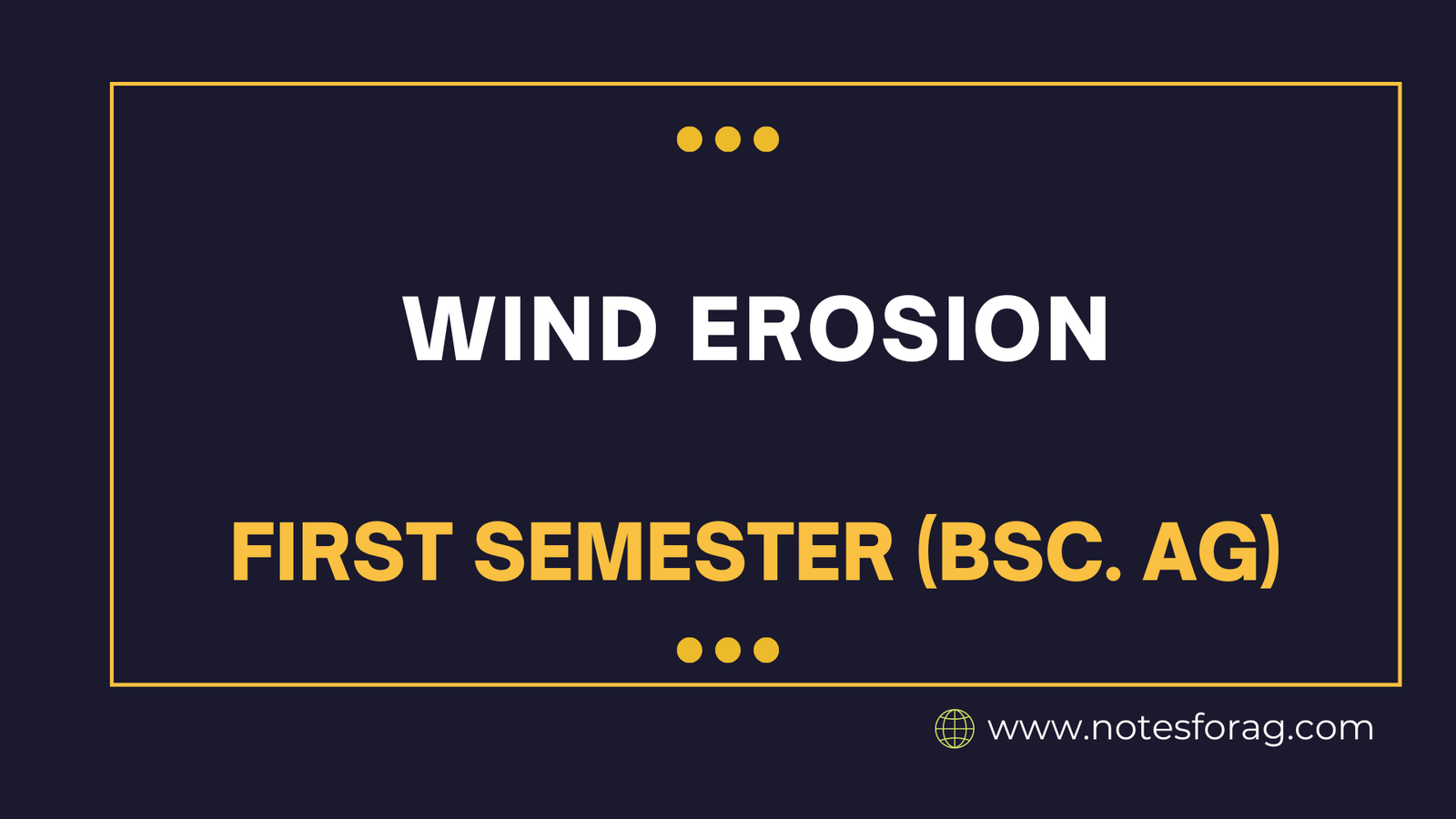Wind movement separates, carries, and deposits soil particles; this process is known as wind erosion. Sand, dry, loose soils with little vegetation cover are the main areas affected, especially in arid and semi-arid regions. Degradation of air quality, desertification, nutrient depletion, and loss of productive topsoil are just a few of the devastating effects that this kind of erosion may have on agriculture and the environment. For the purpose of reducing it’s effects and preserving soil health, effective management techniques including planting windbreaks, keeping vegetative cover, and utilizing conservation tillage are crucial.
Table of Contents
Definition of Wind Erosion
It is the process through which soil particles are carried, dislodged, and left behind by the movement of the wind. It mostly grows in dry and semi-arid areas with loose, sandy soils that are devoid of enough vegetation to shield the soil’s surface from wind activity.

Types of Wind Erosion
- Saltation: A technique in which tiny soil particles are propelled into the air and subsequently hop or bounce along the ground, displacing other particles.
- Suspension: The wind lifts and carries fine soil particles across great distances, frequently staying in the air for extended periods of time.
- Surface Creep: The wind pushes or rolls larger, heavier soil particles along the ground because they are too heavy to be lifted.
Factors Affecting Wind Erosion
- Texture and Structure of the Soil: Loose, fine-textured, sandy soils are more prone to it than clayey or well-aggregated soils are.
- Soil Moisture: Wind erodes dry soils more readily. More cohesive and less prone to shifting soils are found in moist environments.
- Vegetative Cover: By capturing soil particles and slowing down wind speed at the soil’s surface, vegetation wards off wind erosion of the soil.
- Wind Velocity and Frequency: The likelihood of wind erosion rises with increasing wind velocity and frequency of wind events.
- Roughness of Soil Surface: Soils with rougher textures, like ridges or clods, have lower wind speeds at the soil’s surface and a lower chance of erosion.
- Land Use and Management Practices: Practices that decrease vegetative cover and enhance wind erosion include overgrazing, deforestation, and inefficient farming methods.
Losses Due to Wind Erosion
- Loss of Topsoil: The nutrient-rich topsoil layer is lost due to it, which lowers soil fertility and crop yield.
- Nutrient Depletion: As a result of the eroded soil particles, vital nutrients are lost, which lowers the health of the soil.
- Degradation of Air Quality: Dust and tiny soil particles in the atmosphere can lower air quality, which can impact visibility and human health.
- Infrastructure Damage: Soil carried by the wind has the potential to stack up and harm structures such as buildings and roads.
- Desertification: When soil deterioration is severe enough, it can exacerbate the process of turning fertile land into a desert.
- Loss of Seedlings and Crops: It can cause crops and seedlings to be buried or uprooted, which lowers agricultural productivity.
Conservation Practices

- Vegetative Cover: To prevent soil erosion caused by wind, maintain or plant vegetation, such as trees, bushes, and grasses.
- Windbreaks and Shelterbelts: Grouping trees or bushes together to slow down wind and shield crops and soil from wind erosion.
- Cover Crops: To prevent soil erosion and enhance soil health, grow cover crops in the off-season.
- Mulching: To improve soil structure, conserve moisture, and lessen wind erosion, apply organic or synthetic mulch to the soil’s surface.
- Conservation Tillage: To preserve soil structure and organic matter, minimize soil disturbance by using no-till or reduced-tillage techniques.
- Surface roughening: Making ridges or clods on the soil’s surface to slow down wind and hold soil particles in place.
In conclusion, soil health and environmental stability are seriously challenged by wind erosion, which includes forms including surface creep, saltation, and suspension. Soil texture, moisture content, vegetation cover, wind speed, surface roughness, and land management techniques are some of the variables that affect it. Damage to infrastructure, nutrient depletion, loss of nutrient-rich topsoil, deterioration of air quality, and an elevated risk of desertification are some of the negative effects of it. Effective conservation techniques, like keeping vegetative cover, building windbreaks, utilizing conservation tillage, and controlling soil moisture, are crucial for reducing these consequences. These methods support sustainable land management, improve agricultural productivity, and protect soil resources.
Frequently Asked Question(FAQ)
What is wind erosion?
The process by which soil particles are dislodged, carried, and deposited by wind is known as wind erosion. It usually grows in areas that are dry or semi-arid, with sandy, loose soils.
What are the environmental impacts of wind erosion?
Degradation of natural ecosystems and infrastructure, loss of soil fertility, decreased air quality due to dust in the air, and desertification are all consequences of wind erosion. By releasing stored soil carbon into the atmosphere, it may also be a factor in climate change.
Related Articles

